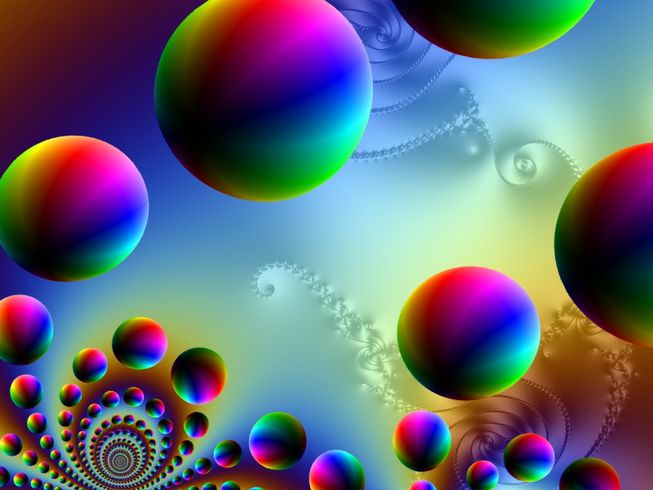
“He it is who [wishes to] lead you out of darkness into light.”
— God (57:9)
“God
has seventy veils of light and darkness; were they to be removed, the
Glories of His Face would burn away everything perceived by the sight of
His creatures.”
— The Prophet
(Muslim, Iman 293; Ibn Majah, Muqaddima 13.)
(We continue our discussion of modern philosophy, referring back to Heidegger where necessary.)
Merleau-Ponty and the Primacy of Perception
Martin Heidegger’s Dasein (“There-being”, the name of the “essence” of the human being in general) tells us next to nothing about how co-presence and being-in-the-world result in consciousness of what is present. The French philosopher Maurice Merleau-Ponty aimed to fill this gap, focusing on the importance of cognitive science (psychology and neuroscience). Among philosophers, he was one of the most scientifically minded.
Merleau-Ponty wants to resolve the apparent dichotomies of two opposing camps. Objectivism places the subject into the world. In the early Husserl’s transcendental subjectivism, the world is located in the subject. For Merleau-Ponty, the body has the property of being simultaneously both body-subject (which is the field of psychology) and body-object (the field of neurophysiology). The body-subject is Merleau-Ponty’s alternative to Descartes’ “thinking ego,” or the mind/body distinction. To paraphrase Wikipedia, in this view “Consciousness, the world, and the human body as a perceiving thing are intimately intertwined and mutually ‘engaged.’”
We perceive the world through our senses. If they are impaired, our knowledge of the external world is radically attenuated, even extinguished. And this is entirely in accord with the claim that a change in the mode of being results in a change in the mode of knowing.
Suppose we are placed in a dark room. Our knowledge of it will be very limited, until someone steps in and turns on the lights. A person with visual impairment will be in that state permanently. The situation is reversed for people with enhanced abilities. Just the
other day, the case of a boy who could see in total darkness was in the news. (This also raises the interesting question of how such a thing can even be possible.) If we are placed in the dark room together, that boy’s knowledge of the room will definitely be superior to
ours.
Phenomena, then, are not unchanging objects of scientific study, but a correlate of our body and its sensory-motor functions. Merleau-Ponty’s concept of “flesh” unites the perceiver and the perceived, subject and object: for him, nature is the matrix, or flesh, in which
the flesh of the body and “the flesh of the world” are conjoined and interdependent.
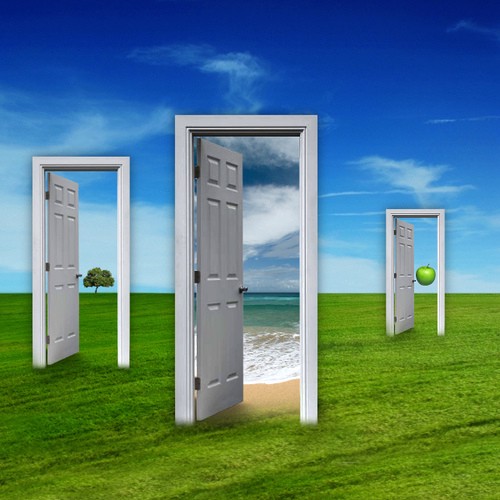 In our day, we can say that higher states of consciousness correspond to elevated states of reality. Psychology professor Charles Tart once published an article called “States of Consciousness and State-Specific Sciences.” It is in this sense that the Heideggerian*
In our day, we can say that higher states of consciousness correspond to elevated states of reality. Psychology professor Charles Tart once published an article called “States of Consciousness and State-Specific Sciences.” It is in this sense that the Heideggerian* maxim: “Each mode of being requires its own mode of understanding/knowledge,” needs to be understood. Consciousness studies (see e.g. this, this and this) have shown that what phenomenologists consider possible (philosophically) is, for those who have experienced alternate realities, actual.
Henry Corbin: From Heidegger to Suhrawardi and Mulla Sadra
Henry Corbin was a 20th-century scholar, theologian and philosopher. In recent years, Tom Cheetham (not to be confused with Heidegger scholar Thomas Sheehan) has led to a revival of interest of Corbin’s work. Cheetham has written a series of appreciative books about Corbin, in which he has made Corbin’s scholarly language more accessible to a wider audience.
What Corbin realized was this: Modern philosophy, in the person of Heidegger, was struggling to rediscover concepts and categories used by Islamic sages hundreds of years ago. The problem was that, since Heidegger recognized only the existence of the physical world, their application was misplaced and insufficient.
For Heidegger, metaphysics—which he detested—was Platonism. Hence, Heidegger's attack on metaphysics was also an attack on Platonism. For Corbin, who was himself a Platonist, this view could never be acceptable. He says he “turned towards Sufism ... because I had been disappointed by Heidegger’s philosophy. This version of things is utterly false.”
Corbin saw that Suhrawardi in the 12th century, and Mulla Sadra in the 17th, had already accomplished what Heidegger was trying to do in the 20th, anticipating him by hundreds of years. Further, they had done so in a manner that Heidegger had not been able to, and in fact could never, achieve.
Like Heidegger, Corbin first studied at a Catholic school and then engaged with Protestantism. He became acquainted with Islamic mystics and Heidegger’s philosophy in roughly the same time frame. Somewhere around 1928, Louis Massignon gave him a copy of Suhrawardi’s Philosophy of Illumination (Corbin translates the title as “Oriental Theosophy”). For Corbin, a convinced Platonist, his encounter with Suhrawardi, “the imam (leader) of the Persian Platonists,” was decisive.
Corbin reads Heidegger’s Being and Time in 1930, and meets the famous philosopher in 1931. He pens the first translation of
Heidegger’s works into French, which is published in 1939 as What is Metaphysics? And it is in Heidegger’s hermeneutic (method of interpretation) that Corbin finds a key to unlocking the secrets of the Sufi sages: “Heidegger’s great merit will remain in his having centered the act of philosophizing in hermeneutics itself. ... philosophical hermeneutics is essentially the key that opens the hidden meaning (etymologically the esoteric) underlying the exoteric statement.”
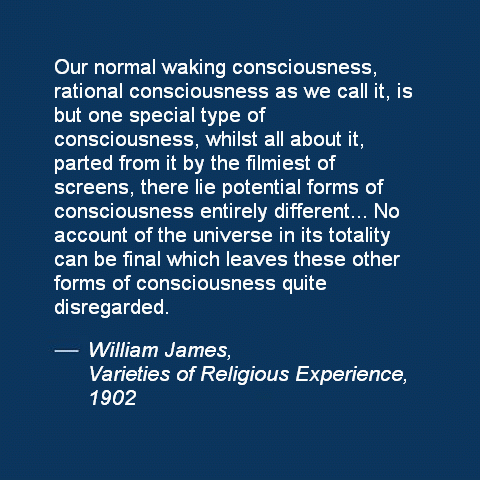 Corbin’s
major insight is that the mode of understanding of a human is
“presenced” to that person’s mode of being. As Cheetham explains: “The
Stations [of Sufism] are modes of being... The mode of being of the soul
must change in order that it can be free for the other levels of
presence.” (p. 53.)
This is the same as saying that to each level of consciousness, there
corresponds a different reality. Or if you wish, each level of
consciousness is tuned to a different world, to a different facet of
Totality. In Corbin’s own words, “Any change in the mode of
understanding is necessarily concomitant with a change in the mode of
being. The modes of being are the ontological, existential conditions of
the act of ‘Understanding’, of the ‘Verstehen’, which is to say of hermeneutics. Hermeneutics is the definitive task set before the phenomenologist.”
Corbin’s
major insight is that the mode of understanding of a human is
“presenced” to that person’s mode of being. As Cheetham explains: “The
Stations [of Sufism] are modes of being... The mode of being of the soul
must change in order that it can be free for the other levels of
presence.” (p. 53.)
This is the same as saying that to each level of consciousness, there
corresponds a different reality. Or if you wish, each level of
consciousness is tuned to a different world, to a different facet of
Totality. In Corbin’s own words, “Any change in the mode of
understanding is necessarily concomitant with a change in the mode of
being. The modes of being are the ontological, existential conditions of
the act of ‘Understanding’, of the ‘Verstehen’, which is to say of hermeneutics. Hermeneutics is the definitive task set before the phenomenologist.” Here we must remember the Saying of the Prophet: “The Koran has an exterior and an interior [meaning], and the interior up to seven interiors.” (In his Masnavi, 4:237, Rumi mentions a version of this Tradition.) The exterior, or apparent, meaning of the Koran can be understood by everyone. The first interior level, the immediate metaphorical sense, can also be grasped by most. The remaining interior meanings are understood according to the station, or level of being, one is in. Hence hermeneutics is a function of one’s mode of being: “like can only be known by like; every mode of understanding corresponds to the mode of being of the interpreter.” (Corbin, Man of Light, p. 145n3.)
At this point, it may be best to leave the word to Corbin. Excerpts (slightly edited) from his interview with Philippe Némo follow.
Nor
is the bridge [between Heidegger and Islamic theological philosophy]
difficult to find. A while ago I mentioned Heidegger’s book on Duns
Scotus. We know, as Etienne Gilson has shown us, that Avicenna is a
starting point for Duns Scotus’s thinking. Furthermore, thanks to the
historians of the Toledo school in the 12th century we have a common Arabo-Latin philosophical vocabulary.
It
would have been much more difficult to translate the vocabulary of a
Suhravardî, an Ibn ‘Arabi, or a Mollâ Sadrâ Shîrâzî, etc… had I not
already undergone a training in the acrobatics required to translate the
extraordinary German vocabulary that one encounters in reading
Heidegger.
There is a “zohûr”, the manifestation, the act of a thing revealing itself, appearing; “izhâr”, the act of making something appear, of making it manifest itself; “mozhir”, that which causes such a thing to manifest itself, “mazhar”, the form of manifestation, the form of epiphany; “mazharîya”, the epiphanic function of a mazhar. In Persian, there are terms such as hast-kardan “make-to-be”; hast-konandeh “that which makes-to-be”, hast-kardeh, hast-gardîdeh,
“that which is makes-to-be, in itself”. There is, of course, no need
for me to sketch out the preliminaries of a dictionary here…
The term Kashf al-mahjûb, which signifies precisely “the unveiling of that which is hidden” [is] precisely the activity of the phenomenologist...
Kashf is the unveiling (Enthüllung: unveiling, revelation, Entdecken:
uncovering) which causes the true meaning itself, initially occulted by
that which is the apparent, to emerge into manifestation...
The Arabic term that corresponds most closely to the term “hermeneutics” [is] the term ta’wîl. Etymologically, the word ta’wîl means “to re-conduct something to its source, to its archetype”.
While
following the example of the Heideggerian Analytic, I was drawn to
explore hermeneutical levels that his program had not yet envisioned...
the esoteric hidden beneath the phenomenon of the literal appearance of
the [spiritual] tales and accounts related in Holy Books.
If
there were no more than the merely historical, the Koran would have
long since become a dead book. Yet, to the contrary this book shall
live till the day of Resurrection, and if it lives, it is by virtue of
the spiritual hermeneutics that is forever unveiling its hidden
meanings.
The
key, continues Corbin, is the hermeneutic (interpretation). But
although Heidegger discovered this method, Corbin does not share his
worldview. He refuses to be limited to the world of the five senses, for
the Eastern sages have dis-covered and revealed other worlds and
interworlds. The Illuminationist philosophers recognize two types of knowledge: formal, mediated knowledge (ilm sûrî), and presential knowledge (ilm hozurî), direct knowledge obtained by being present. Thus, their metaphysics (and that of Mulla Sadra) culminates in a metaphysics of Presence (hozûr). This requires immediate presence: the soul’s “act of presence” itself gives rise to the presence of things and renders them present to itself. They are no longer objects, but presences.
According to Corbin, two illuminations occur at once. The spiritual sun of Being shines upon the soul, and simultaneously, the soul illuminates the things which it reveals and which it reveals to itself as co-presences. The human presence, in enacting its own presence, renders other presences present to itself. It surrounds itself with other constellations of presences when it reveals itself to itself: it is present to other worlds in its being-there (Da-sein).
Being Beyond Death
Heidegger expounds a key element of his philosophy in his masterwork, Being and Time.* For Heidegger, locked as he is into the temporal finitude of the physical world, human beings can only look forward to “being-for-death” (Sein zum Tode). Man is “doomed to nothingness.” But for Iranian mystics such as the Sufi philosopher Suhrawardi or Mulla Sadra, “being for beyond-death” (Sein zum Jenseits des Todes) is possible, because they can conceive of the existence of the spirit, which does not die and survives bodily death.
According to Heidegger, two attitudes are possible in the face of death, which is imminent and inevitable for us all. The first, the authentic (roughly corresponding to sociologist David Riesman’s “inner-directed man”), is to aim at realizing all the possibilities our life and resources allow us. The other, the inauthentic (“outer-” or “other-directed man”), is to drown one’s fear of death in the multitude: to lose oneself in the empty talk and hubbub of daily life, to try to forget about death. The mood that awakens man and puts him face to face with nothingness is anxiety. If man can embrace his nothingness and come out on the other side intact, without being shattered, this will be his transcendence. One then has the possibility of existing as a completed whole. But this original anxiety, leading to facing one’s nothingness, comes only in rare moments; it is the privilege of a few elect.
Yet Heideggerian transcendence is incomplete: it is not concerned at all with the afterlife (Jenseits). Corbin finds this missing element in the Iranian thinkers: “What I was looking for in Heidegger and that which I understood thanks to Heidegger, is precisely that which I was looking for and found in the metaphysics of Islamic Iran.”
For the Sufi philosophers, the act of transcendence reveals a presence beyond death. The more intense the act of being, the act of existence, the more one is present to other worlds, and the more one’s being is absent to death. Heidegger’s transcendence is horizontal; that of the Eastern sages, vertical. The human being climbs the ladder of ascension from one stage to the next, is born into other worlds, becomes present at higher levels of Being—until the Origin, the Source of All, the Superreality of God, is reached. The archetype for this is, of course, the Ascension (miraj) of the Prophet.
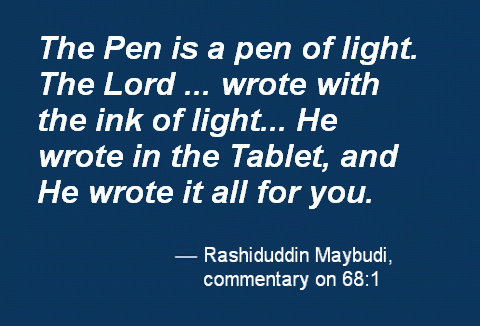 Hence, let us take a closer look at Suhrawardi’s thought.
Hence, let us take a closer look at Suhrawardi’s thought.Suhrawardi’s Philosophy of Light
Let us first consider the following Verse from the Koran:
“God is the Light of the heavens and the earth... Light upon light (nûrun alâ nûrin)!” (24:35) Here,
“the Light” (al-Nur) is one of the 99 Beautiful Names of God.
The Prophet said: “God first created my Spirit, my Light, the Pen (of light), the Mind (Intellect). And He created everything else from that.”
A Holy Tradition explains this as follows: “I created Mohammed from the light of My Countenance.” As the Grand Saint Abdulqader Geylani has remarked, “The Mohammedan Spirit [which is also Light] is the essence of Becoming, the predecessor and origin of the universe.” This is called the Reality of Mohammed. It is not physical light, composed of photons (Ar. ziya, Lat. lumen), but spiritual, primordial or divine light (Ar. nur, Lat. lux). When God says “Let there be light” in the Bible (Hebr. yehi ‘or, Lat. fiat lux—Genesis 1:3), this is what is happening.
This all shows that Islam lends itself well to the development of a philosophy of light. And this is what Shihabuddin Yahya Suhrawardi, also known as “Shaykh al-ishraq” (the master of illumination), accomplished. (He is also called Suhrawardi maqtul (martyr), to distinguish him from another famed contemporary Sufi, Shihabuddin Abu Hafs Suhrawardi.)
In the Niche of Lights (Mishkat al-Anwar), the famous scholar Ghazzali (d.1111) dealt with the Light Verse (24:35) quoted above. About half a century later, Suhrawardi (d.1191) expounded an ontology of light in his Philosophy of Illumination (Hikmat al-Ishraq). (See this article for a possible link between the two authors.)
Suhrawardi was not only a Sufi, but also a talented philosopher, which is why he was able to articulate his mystical experiences in philosophical terms. His explanations fall within the field of Neoplatonism, and his philosophy is a version of emanationism. (Emanation, meaning “to flow from” or “to pour forth or out of”, is how all things are derived from the first reality.) He made use of the Arabic Theology of Aristotle, a Neoplatonist treatise.***
 Suhrawardi calls Avicenna’s Necessary Being, or God, “the Light of Lights” (nur al-anwar):
“The True King is He who possesses the essence of everything but whose
essence is possessed by none. He is the Light of Lights.” (Suhrawardi, Philosophy of Illumination (PI), p. 96.) From the Light of Lights proceeds the Proximate Light or First Light, and from that, all other lights—everything that exists.
Suhrawardi calls Avicenna’s Necessary Being, or God, “the Light of Lights” (nur al-anwar):
“The True King is He who possesses the essence of everything but whose
essence is possessed by none. He is the Light of Lights.” (Suhrawardi, Philosophy of Illumination (PI), p. 96.) From the Light of Lights proceeds the Proximate Light or First Light, and from that, all other lights—everything that exists.
Reality
proceeds from the Light of Lights and unfolds via the First Light and
all the subsequent lights whose exponential interactions bring about the
existence of all entities. As each new light interacts with other
existing lights, more light and dark substances are generated. Light
produces both immaterial and substantial lights, such as immaterial
intellects (angels), human and animal souls. Light produces dusky
substances, such as bodies. Light can generate both luminous
[attributes], such as those in immaterial lights, physical lights or
rays, and dark [attributes], whether it be in immaterial lights or in bodies (PI, 77.1–78.9). (SEP, 4.2.)
The First Light, we have already seen, is none other than the Light of Mohammed.Suhrawardi is one of the Sufi-Islamic philosophers who anticipated Heidegger. As Toshihiko Izutsu remarked:
Martin
Heidegger’s understanding of “existence”, which he has reached in the
latter phase of his career, is remarkably close and akin to the Oriental
understanding. … basic ideas of Heideggerian metaphysics immediately
evoke in our minds Suhrawardi’s idea of “reality” and “knowing” as
presence (hudûr) and Light (nûr).
Yet the two definitely part from each other when Heidegger makes it clear that [Reason is the adversary of thinking]. (p. 105.)
It
is noteworthy that Heidegger originally conceives of light as the
enabler of knowledge and consciousness. Being is the primordial ‘light’
that enables all beings to shine forth, but it is not itself a being. In
Plato’s Allegory of the Cave, the sun, for Heidegger, is a metaphor for
Being. The sun is the light source that enables all beings to be, it
makes possible all lighted beings, and the same holds for Being: “The
basic condition for the knowledge of beings as well as for the
understanding of being[ness] is: standing in an illuminating light.” (p. 106.) Here we cannot fail to recall the Light Verse in the Koran.
Robert Monroe and OOBEs
Part 1
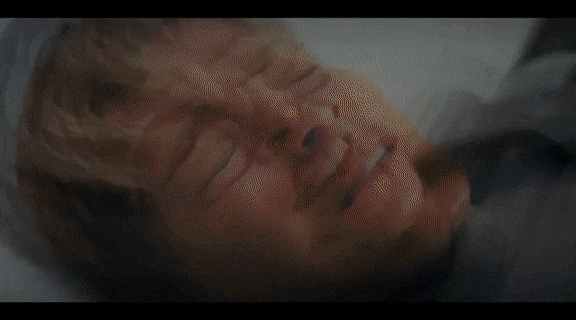
OOBE (Out-Of-Body Experience) scene from Nightflyers (2018), S01E09.
Robert Monroe was a successful American businessman working in the broadcasting industry. In the spring of 1958, he began to experience painful cramps in his diaphragm and solar plexus, followed over the next few weeks by episodes in which he felt as if his body was shaking violently—though no shaking of the physical body actually occurred.
Let Monroe tell the rest:
Several
months passed, and the vibration condition continued to occur. It
almost became boring, until late one night when I was lying in bed just
before sleep. The vibrations came and I wearily and patiently waited
for them to pass away so I could go to sleep. As I lay there, my arm
was draped over the right side of the bed, fingers just brushing the
rug.
Idly, I tried to move my fingers and found I could scratch the rug. Without thinking or realizing that I could move my fingers during the vibration, I pushed with the tips of my fingers against the rug. After a moment's resistance, my fingers seemed to penetrate the rug and touch the floor underneath. With mild curiosity, I pushed my hand down farther.
My fingers went through the floor and there was the rough upper surface of the ceiling of the room below. I felt around, and there was a small triangular chip of wood, a bent nail, and some sawdust. Only mildly interested in this daydream sensation, I pushed my hand still deeper. It went through the first-floor ceiling and I felt as if my whole arm was through the floor. My hand touched water. Without excitement, I splashed the water with my fingers.
Suddenly, I became fully aware of the situation. I was wide awake. I could see the moonlit landscape through the window. I could feel myself lying on the bed, the covers over my body, the pillow under my head, my chest rising and falling as I breathed. The vibrations were still present, but to a lesser degree.
Yet, impossibly, my hand was playing in a pool of water, and my arm felt as if it was stuck down through the floor. I was surely wide awake and the sensation was still there. How could I be awake in all other respects and still "dream" that my arm was stuck down through the floor?
The vibrations started to fade, and for some reason I thought there was a connection between my arm stuck through the floor and their presence. If they faded away before I got my arm "out," the floor might close in and I would lose an arm. Perhaps the vibrations had made a hole in the floor temporarily. I didn't stop to consider the "how" of it.
I yanked my arm out of the floor, pulled it up on the bed, and the vibrations ended soon after. I got up, turned on the light, and looked at the spot beside the bed. There was no hole in the floor or rug. They were just as they always had been. I looked at my hand and arm, and even looked for the water on my hand. There was none, and my arm seemed perfectly normal. I looked about the room. My wife was sleeping quietly in the bed, nothing seemed amiss.
Idly, I tried to move my fingers and found I could scratch the rug. Without thinking or realizing that I could move my fingers during the vibration, I pushed with the tips of my fingers against the rug. After a moment's resistance, my fingers seemed to penetrate the rug and touch the floor underneath. With mild curiosity, I pushed my hand down farther.
My fingers went through the floor and there was the rough upper surface of the ceiling of the room below. I felt around, and there was a small triangular chip of wood, a bent nail, and some sawdust. Only mildly interested in this daydream sensation, I pushed my hand still deeper. It went through the first-floor ceiling and I felt as if my whole arm was through the floor. My hand touched water. Without excitement, I splashed the water with my fingers.
Suddenly, I became fully aware of the situation. I was wide awake. I could see the moonlit landscape through the window. I could feel myself lying on the bed, the covers over my body, the pillow under my head, my chest rising and falling as I breathed. The vibrations were still present, but to a lesser degree.
Yet, impossibly, my hand was playing in a pool of water, and my arm felt as if it was stuck down through the floor. I was surely wide awake and the sensation was still there. How could I be awake in all other respects and still "dream" that my arm was stuck down through the floor?
The vibrations started to fade, and for some reason I thought there was a connection between my arm stuck through the floor and their presence. If they faded away before I got my arm "out," the floor might close in and I would lose an arm. Perhaps the vibrations had made a hole in the floor temporarily. I didn't stop to consider the "how" of it.
I yanked my arm out of the floor, pulled it up on the bed, and the vibrations ended soon after. I got up, turned on the light, and looked at the spot beside the bed. There was no hole in the floor or rug. They were just as they always had been. I looked at my hand and arm, and even looked for the water on my hand. There was none, and my arm seemed perfectly normal. I looked about the room. My wife was sleeping quietly in the bed, nothing seemed amiss.
(Robert A. Monroe, Journeys Out of the Body (1972), pp. 25-26.)
 Illicit Wealth and Illicit Lust
Illicit Wealth and Illicit Lust
Good deeds and bad deeds have their correlates in the spiritual world. Good deeds enhance one’s light, bad deeds darken it.
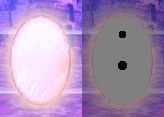
 This is where the two great prohibitions of Illicit Gain and Illicit Lust (extramarital sex) come in. Endowed with conscious inner vision, Suhrawardi would have been depressed to “see” people unwittingly ruin their chances of spiritual ascent, their light darkened and mutilated at all the wrong places, their spiritual bodies bruised black and blue.
This is where the two great prohibitions of Illicit Gain and Illicit Lust (extramarital sex) come in. Endowed with conscious inner vision, Suhrawardi would have been depressed to “see” people unwittingly ruin their chances of spiritual ascent, their light darkened and mutilated at all the wrong places, their spiritual bodies bruised black and blue. It is both easy and hard to become a Sufi saint. It is easy, if one can keep these two urges in check. The hard part is doing that. Once these two doors through which darkness can flood in are closed, there remains only to enhance one’s brightness. And this is accomplished through the Formal Prayer (salat, namaz). For as the Prophet said, “Formal Prayer is the Ascension (miraj) of the faithful.”
This does not occur in outer space. One does not even move from where one performs the Prayer. Rather, the ascent occurs in inner space, in the imaginal world. As one’s light is progressively increased, one moves higher and higher toward the summit of Unity—whether one is conscious of it or not. (In the vast majority of cases, one is not aware that one is ascending, but this is unimportant.)
 [Sidebar 2]
[Sidebar 2]Robert Monroe and OOBEs
Part 2
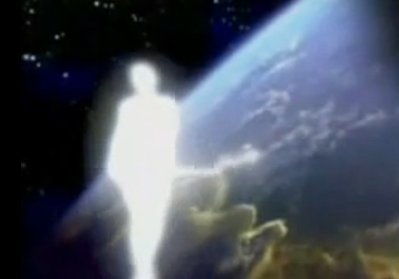
At the beginning of 1944, following a heart attack, psychologist Carl Gustav Jung was able to observe the Earth from space in an OOBE, long before astronauts could. Jung writes:
“… I was high up in space. Far below I saw the globe of the earth, bathed in a gloriously blue light. I saw the deep blue sea and the continents. Far below my feet lay Ceylon, and in the distance ahead of me the subcontinent of India. My field of vision did not include the whole earth, but its global shape was plainly distinguishable and its outlines shone with a silvery gleam through that wonderful blue light. ... I could also see the snow-covered Himalayas, but in that direction it was foggy or cloudy. I did not look to the right at all. I knew that I was on the point of departing from the earth.
Later I discovered how high in space one would have to be to have so extensive a view—approximately a thousand miles! The sight of the earth from this height was the most glorious thing I had ever seen.” (C.G. Jung, Memories, Dreams, Reflections (1961), p. 289.)
“… I was high up in space. Far below I saw the globe of the earth, bathed in a gloriously blue light. I saw the deep blue sea and the continents. Far below my feet lay Ceylon, and in the distance ahead of me the subcontinent of India. My field of vision did not include the whole earth, but its global shape was plainly distinguishable and its outlines shone with a silvery gleam through that wonderful blue light. ... I could also see the snow-covered Himalayas, but in that direction it was foggy or cloudy. I did not look to the right at all. I knew that I was on the point of departing from the earth.
Later I discovered how high in space one would have to be to have so extensive a view—approximately a thousand miles! The sight of the earth from this height was the most glorious thing I had ever seen.” (C.G. Jung, Memories, Dreams, Reflections (1961), p. 289.)
Monroe (continues):
Some
four weeks later, when the “vibrations” came again, I was duly
cautious about attempting to move an arm or leg. It was late at
night, and I was lying in bed before sleep. My wife had fallen asleep
beside me. There was a surge that seemed to be in my head, and quickly
the condition spread through my body. It all seemed the same. As I lay
there trying to decide how to analyze the thing in another way, I just
happened to think how nice it would be to take a glider up and fly the
next afternoon (my hobby at that time). Without considering any
consequences—not knowing there would be any—I thought of the pleasure it would bring,
After a moment, I became aware of something pressing against my shoulder. Half-curious, I reached back and up to feel what it was. My hand encountered a smooth wall. I moved my hand along the wall the length of my arm and it; continued smooth and unbroken.
My senses fully alert, I tried to see in the dim light. It was a wall, and I was lying against it with my shoulder. I immediately reasoned that I had gone to sleep and fallen out of bed. (I had never done so before, but all sorts of strange things were happening, and falling out of bed was quite possible.)
Then I looked again. Something was wrong. This wall had no windows, no furniture against it, no doors. It was not a wall in my bedroom. Yet somehow it was familiar. Identification came instantly. It wasn’t a wall, it was the ceiling.
I was floating against the ceiling, bouncing gently with any movement I made. I rolled in the air, startled, and looked down. There, in the dim light below me, was the bed. There were two figures lying in the bed. To the right was my wife. Beside her was someone else. Both seemed asleep.
This was a strange dream, I thought. I was curious. Whom would I dream to be in bed with my wife? I looked more closely, and the shock was intense. I was the someone on the bed!
My reaction was almost instantaneous. Here I was, there was my body. I was dying, this was death, and I wasn’t ready to die. Somehow, the vibrations were killing me. Desperately, like a diver, I swooped down to my body and dove in. I then felt the bed and the covers, and when I opened my eyes, I was looking at the room from the perspective of my bed.
What had happened? Had I truly almost died? My heart was beating rapidly, but not unusually so. I moved my arms and legs. Everything seemed normal.
After a moment, I became aware of something pressing against my shoulder. Half-curious, I reached back and up to feel what it was. My hand encountered a smooth wall. I moved my hand along the wall the length of my arm and it; continued smooth and unbroken.
My senses fully alert, I tried to see in the dim light. It was a wall, and I was lying against it with my shoulder. I immediately reasoned that I had gone to sleep and fallen out of bed. (I had never done so before, but all sorts of strange things were happening, and falling out of bed was quite possible.)
Then I looked again. Something was wrong. This wall had no windows, no furniture against it, no doors. It was not a wall in my bedroom. Yet somehow it was familiar. Identification came instantly. It wasn’t a wall, it was the ceiling.
I was floating against the ceiling, bouncing gently with any movement I made. I rolled in the air, startled, and looked down. There, in the dim light below me, was the bed. There were two figures lying in the bed. To the right was my wife. Beside her was someone else. Both seemed asleep.
This was a strange dream, I thought. I was curious. Whom would I dream to be in bed with my wife? I looked more closely, and the shock was intense. I was the someone on the bed!
My reaction was almost instantaneous. Here I was, there was my body. I was dying, this was death, and I wasn’t ready to die. Somehow, the vibrations were killing me. Desperately, like a diver, I swooped down to my body and dove in. I then felt the bed and the covers, and when I opened my eyes, I was looking at the room from the perspective of my bed.
What had happened? Had I truly almost died? My heart was beating rapidly, but not unusually so. I moved my arms and legs. Everything seemed normal.
The vibrations had faded away. I got up and walked around the room, looked out the window, smoked a cigarette.
It was a long time before I had the courage to return to bed, lie down, and try to sleep.
(Robert A. Monroe, Journeys Out of the Body (1972), pp. 27-28.
How
many people have awakened in hospital rooms to observe doctors below
operating on their sedated bodies? How many people who lost a limb have
felt the limb still in place (the “phantom limb” effect)? This changes
everything. Some scientists have theorized that the brain, the unconscious mind, creates a map of the human body and projects that, creating the false sensation that these things are real. They invent complicated mechanisms for how this can occur. Gurdjieff would have called this “the usual scientific sophistry.” These are as convincing as the “cycles of cycles of epicycles” invented by medieval scientists on the assumption that the sun and other planets moved around the Earth, that our planet was the center of the universe. This runs directly counter to Occam’s Razor: that the simplest explanation is after all the correct one. We have nothing to lose but our preconceptions.
Robert Monroe has already mentioned the existence of two senses: touch and vision. Indeed, we possess five inner senses that complement our five outer (physical, material) senses. And perhaps more: as Master Ahmet Kayhan remarked, “this head is the antenna of the 18 thousand worlds.”
This was the beginning of Monroe’s out-of-body experiences (OOBEs or OBEs). Monroe discovered he had a talent for slipping in and out of his body. Mulla Sadra considers this a sign of the Sufi sage: “the body, in relation to him, becomes like a shirt, which he takes off at times and puts on at other times.” (p. 133n452.)
Monroe called this spirit-body, which could be disengaged from his physical body, the “second body.” (Psychologist Carl G. Jung termed it the “subtle body”, along with Ghazzali and the rest of classical Islam (jism latîf). Henry Corbin called it the “spiritual body”.) And soon, he began to slip between worlds as well. For our vast physical universe is just one of the realms accessible to the human spirit. Corbin situates some of these other worlds under the heading of “imaginal world.”

Traditionally, philosophers have recognized the existence of three worlds: the material world of everyday existence, the intelligible world or the world of the mind, and the spiritual world. A lot of confusion can be traced to the reduction of the spiritual world to the intelligible world, so that events of that world were mistaken for mental phenomena.
Based on his studies of the Sufis and Islamic philosophers, Corbin concluded that a fourth world had to exist. He called this the “Imaginal World” following Ibn Arabi (âlam al-mithâl). Almost half a century before Ibn Arabi, however, Suhrawardi introduced his own independent imaginal world. This is an intermediary realm between the world of pure light and the physical world of darkness, lying somewhere between the physical world and the lower threshold of the world of souls. Nonetheless, Suhrawardi did not elaborate on this concept, and that task was left to his followers. (SEP, 4.3.)
Mulla Sadra
Further on, Sadruddin Shirazi, also known as Mulla Sadra (d.1640), took up Suhrawardi’s insight about the gradation and intensity of light, and developed an ontology based on the gradation of all beings. Thus, he reversed Suhrawardi’s ontology of light, and returned to Avicenna’s conception of the primacy of existence. (Sadra understood essence only as a mental concept, a product of the human mind.) This corresponds to the late period of Heidegger.
It should be noted that Mulla Sadra was a philosopher rather than a Sufi. Ibn Arabi, however, considered that God’s Being and His Essence are the same (wujûduhu 'ayn dhâtihi). Hence, God's Essence is no mere mental construct, and it is unwise to speak about it at all.
The core of mysticism is nonduality. Our experience is confined to Multiplicity (kasrat), so we have the utmost difficulty comprehending Unity (wahdat). Unity cannot even be expressed, for all language is based on drawing distinctions. The moment you name something, you set it apart from all other things not so named. This is why the mystical experience of Unity is ineffable. Essence and existence are one, they are “not-two”. The instant you name essence and existence separately, you are in duality. But you name them separately because you are always already in Multiplicity. And since philosophy—indeed, human communication—is based on language, the experience, the “presence”, of Unity can never be achieved by thought alone.
In short, Sadra borrowed his main idea, the gradation of beings, from Suhrawardi, and substituted being (wujûd) for Suhrawardi’s light. He did appropriate minor parts of Ibn Arabi’s teachings, but he was first and foremost a member of the Illuminationist school of Islamic philosophy.
In Conclusion
It
is true, of course, that Corbin overindulged in Imamology and
angelology (the latter perhaps under the influence of Swedenborg). But
this in no way detracts from his remarkable achievement: of having found a pathway from modern post-Nietzschean philosophy to Sufism.
Select Bibliography
Henry Corbin, “From Heidegger to Suhrawardi: An Interview with Philippe Némo.”
Samir Mahmoud, “From Heidegger to Suhrawardi: An Introduction to the thought of Henry Corbin.” (Also here in five parts.)
Daryush Shayegan, Henry Corbin: Penseur de l'Islam Spirituel (Paris: Albin Michel, 2011).Nile Green, “Between Heidegger and the Hidden Imam: Reflections on Henry Corbin’s Approaches to Mystical Islam,” in Le monde turco-iranien en question (Paris: Institut de hautes études internationales et du développement, 2008), pp. 247-259.
Reza Akbarian, Amelie Neuve-Eglise, “Henry Corbin: from Heidegger to Mulla Sadra,” Hekmat va Falsafeh (Wisdom and Philosophy), Vol. 4, No. 2, August 2008, pp. 5-30.
Shihab al-Din Suhrawardi, The Philosophy of Illumination (John Walbridge, Hossein Ziai (Trs.), Brigham Young University, 2000).
Mehdi Amin Razavi, Suhrawardi and The School Of Illumination (Richmond Surrey, UK: Curzon Press, 1997).
Alparslan Açıkgenç, Being and Existence in Sadra and Heidegger (Kuala Lumpur, Malaysia: ISTAC, 1993).
Muhammad Kamal, From Essence to Being: The Philosophy of Mulla Sadra and Martin Heidegger (London: ICAS Press, 2010).
* Heidegger seems to have gotten this concept from Thomas of Erfurt, who wrote (circa 1300): “their mode of understanding would be their mode of being” (SEP 3); “according to Thomas... the mode of understanding [depends] on the mode of being” (p. 24).
** Here I rely mainly on Daryush Shayegan’s excellent account.
*** The Theology of Aristotle is a paraphrase of parts of Books IV-VI of Plotinus’ Enneads. Suhrawardi misattributes the work to Plato, probably because the latter is frequently mentioned therein.
[1] UPDATE FEB 11, 2020The last sentence of this caption has been deleted. Further research has persuaded me that the Piri Reismap has nothing to do with OOBEs.